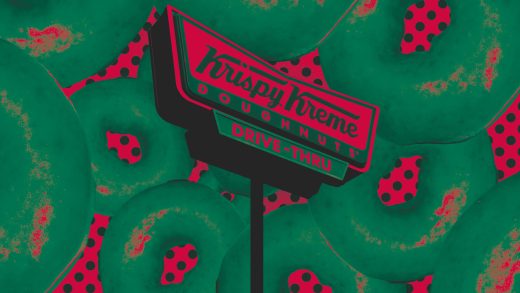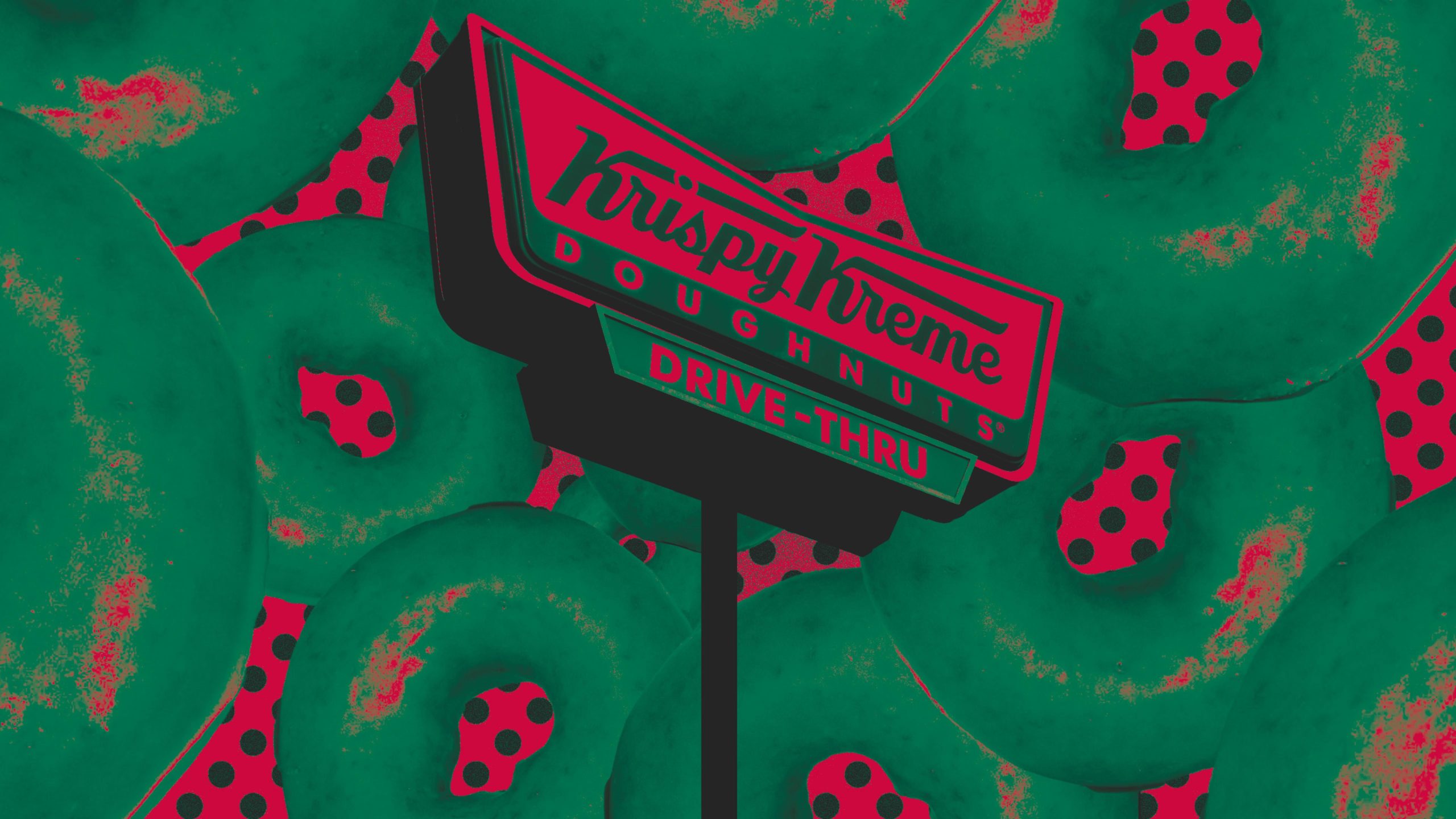Why Krispy Kreme is always giving away so many free doughnuts
Why Krispy Kreme is always giving away so many free doughnuts
Krispy Kreme seems to turn every holiday into a free giveaway. But how does the doughtnut math work?
BY Rob Walker
Branded is a weekly column devoted to the intersection of marketing, business, design, and culture.
If you had to identify the most pleasing phrases in the English language, surely “free doughnuts” would make the top 10.
And if there’s one brand that seems determined to make the most of this unassailable bit of wisdom, it’s Krispy Kreme. Consider the past month or two alone. Krispy Kreme offered two free doughnuts to customers nationwide on Super Tuesday. On St. Patrick’s Day, you could get a free green glazed donut if you showed up in green. On February 29, it offered a free doughnut to all Leap Day babies. At specific Louisiana locations, a regional promotion offered free donuts for bringing in plastic Mardi Gras beads. And remember the AT&T cell service outage? Krispy Kreme even had a snap doughnut giveaway for that.
The free sample is, of course, a venerable sales tactic, likely as old as commerce itself: How better to stoke demand than with your actual product as promotion? At Krispy Kreme, the practice dates back to 1937 with founder Vernon Rudolph handing out the occasional hot glazed to customers in line at his first location in Winston-Salem, North Carolina, notes the chain’s global chief brand officer, Dave Skena. Today, the freebie is a pillar of Krispy Kreme marketing, tied to all manner of occasions and events—from news of a big lottery prize to vaccination participation, and earns the company a lot of free press.
Still, the tactic only works if the payoff outweighs the giveaway cost. Has Krispy Kreme mastered some particular doughnut math? The company’s net revenue grew 10.2% last year to $1.7 billion, but profits have been squeezed, as it deals with rising costs of sugar and other materials. But the giveaways are definitely a formula that works for Krispy Kreme, says Skena. “We’ve done this enough times through the years that we do pretty well,” he says. He offers some ingredients of the free-doughnut equation: First, is there something that’s capturing the public eye— “cultural events with a lot of attention around them”? Second: Is there a role for Krispy Kreme that makes sense for the brand? And finally: Can they execute it well and quickly? For example, the AT&T outage giveaway (extended to anyone having cell trouble, regardless of carrier or region) was rolled out less than two hours after it was conceived.
“We don’t spend a lot of time overanalyzing,” Skena says. “Worst case, we make a lot of people happy and do something right for the brand; best case, it’s driving incremental folks to the store saying, ‘Let’s go get that free donut — and maybe I’ll pick up six for my friend.’”
The free sample strategy is, of course, hardly unique to Krispy Kreme. One of the most frequently cited examples is Costco; its many rotating sample stations are a signature hit with many customers. But as an Atlantic dive into Costco’s samples strategy back in 2014 pointed out, the payoff to giveaways isn’t just the obvious novelty factor, but also a more subtle play to reinforce loyalty. Yes, a sample of, say, chocolate, can spark an appetite for more. But it can also feel like a small gesture of generosity that deserves a gesture in return—either in the moment or later.
“Reciprocity is a very, very strong instinct,” Dan Ariely, the behavioral economist and author, told The Atlantic. “If somebody does something for you, you really feel a rather surprisingly strong obligation to do something back for them.”
Like, say, buying a half-dozen doughnuts for a friend. But in Krispy Kreme’s case, the giveaway is, according to Skena, a direct extension of the brand. “Our product is most often sold in dozens,” he points out. “People eat one or two of those and they give the rest of them away. How many products do you know of where people buy 12 and give 10 away? They’re a very shared product.” (He even maintains that internal research finds Krispy Kreme customers index higher than the general population on generosity.)
In other words, it’s not about doughnut math; it’s about connecting to the doughnut’s DNA as a consumable good. So the giveaway notion is literally baked into Krispy Kreme’s discount deals for fundraisers, its loyalty program (including a doughnut birthday gift), and its encouragement of managers to reward regulars with a hot-off-the-line doughnut in the style of Vernon Rudolph.
But it’s the event-adjacent stunts that really stand out. Not just the pre-planned calendar days—giveaways tied to World Kindness Day and Random Acts of Kindness Day—but particularly the ones that feed off current events: They rack up tons of free publicity from news outlets hungry for a fresh, fun angle on whatever people are buzzing about. “People want to talk about it through social media,” Skena says, “and media outlets often want to share the good news because there’s not always as much good news as we all want.” And if “free doughnuts” isn’t good news, what is?
Correction, March 22, 2024: An earlier version of his article misspelled the name of Krispy Kreme founder Vernon Rudolph.
ABOUT THE AUTHOR
(16)



